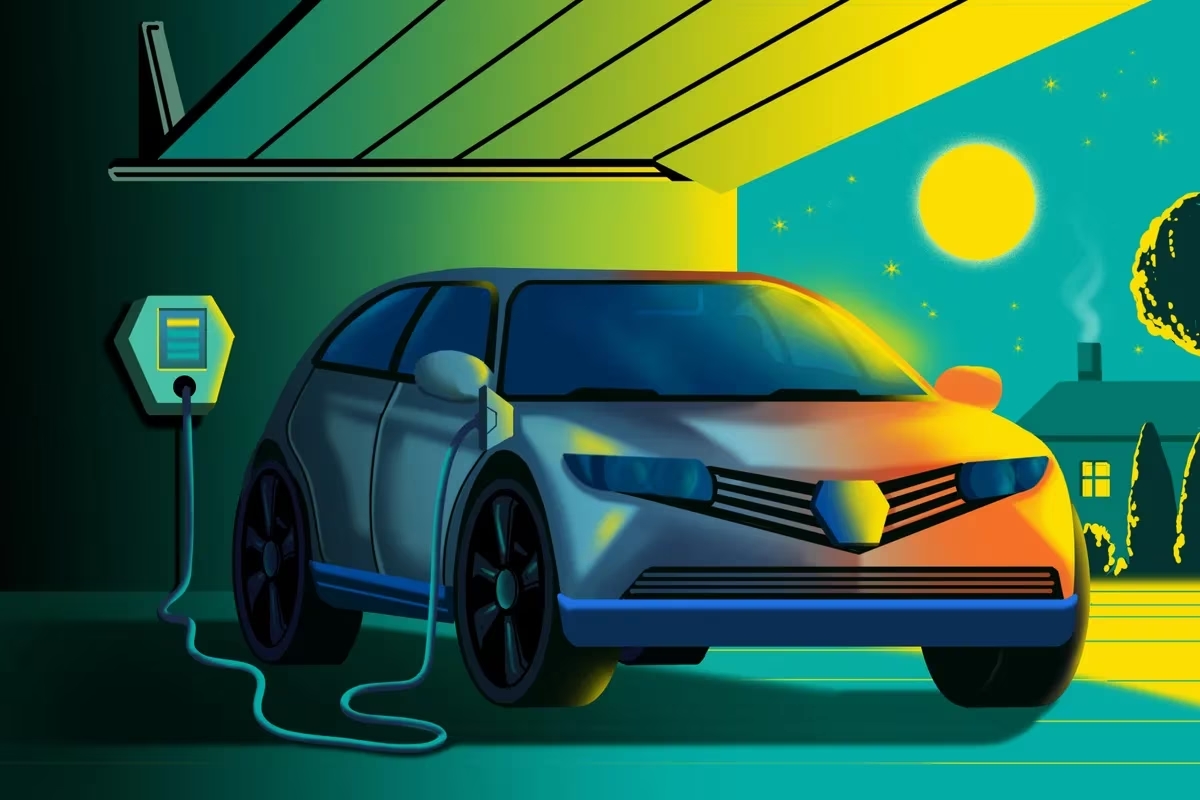
Public fast-charging stations generally bill you by time rather than the power drawn, but they often fail to produce kilowatts anywhere near the level posted, for reasons that you’ll never discover. ILLUSTRATION BY GLENN HARVEY
Electric vehicles are so radically different from many of our old gas-guzzlers, especially when you focus on an EV’s sophisticated battery technology and its operational silence, that they often draw comparisons to computers and smartphones.
You know there’s a lot of tech wizardry in there, rather than mechanical parts.
That’s not a problem for most of us – when everything is working fine. With fewer moving parts than cars with internal combustion engines (ICEs), car pros often laud EVs for being relatively maintenance free.
“With no engine oil or air filter changes, no spark plugs to worry about, and no timing belt like some ICEs, battery electric vehicles significantly minimize the need for regular upkeep,” Dan Dominato, national manager of aftersales at Hyundai Auto Canada, said in an e-mail.
That’s good news for someone like me, who has never been handy with cars. I can swap out wiper blades, top up windshield wiper fluid and adjust tire pressure. Beyond that, my credit card is my tool of choice for handling repairs.
But the technical nature of EVs – perhaps moreso than other modern vehicles because of the batteries – can be disorienting when your car acts mysteriously or does something it shouldn’t.
You might feel anxious because of an unexplained amber light on your dash (guilty); frustrated by a pop-up on your navigation screen warning you of slippery conditions when it is dry (guilty); or perplexed by how you can park your car at night with the battery charged at 80 per cent and wake up the next morning with the battery at 82 per cent (guilty).
This bafflement can extend to charging an EV. Public fast-charging stations generally bill you by time rather than the power drawn, but they often fail to produce kilowatts anywhere near the level posted, for reasons that you’ll never discover.
“I have no idea what I’m going to be paying when I pull into a charger. It is completely inscrutable,” said Maarten Heilbron, a Torontonian who received his Hyundai Ioniq 5 (same car as mine) in April.
Apart from charging mysteries, he has faced a few head-scratchers with his vehicle, too. He wanted to make one-pedal driving – a regenerative-braking feature of EVs, where taking your foot off the accelerator brings the car to a full stop – the default setting. However, he couldn’t get the car to agree.
He’s also having trouble getting his car to back up when he has a bike rack on the back.
“It used to be that you were in charge of everything in the car, and now you are in charge of next to nothing,” Mr. Heilbron said.
Generally, he doesn’t have a problem with this lack of control, but he understands how it can be frustrating for some drivers.
Software quirks aside, actual problems with EVs can be considerably more difficult to overcome, even if you’re handy.
I contacted Corbin Lissabet – whom I know through his YouTube channel, The Ioniq Guy – because he’s comfortable walking viewers through complex, under-the-hood subject matter. Though this article is Hyundai-centric, to reflect my own experience with an EV, the comments should apply to all battery electric vehicles.
In a recent episode, Mr. Lissabet explored his frustration over a failed radar sensor in his EV, which knocked out the car’s adaptive cruise control – a feature that will automatically maintain a safe distance with the car in front.
As a hands-on guy, he thinks he could have replaced the sensor himself, but he figured it would need to be calibrated by the car manufacturer anyway. Instead of tinkering, he had the defect repaired under warranty, which makes him wonder about the costs associated with EVs as they age.
“Things do go wrong and most of the time it’s the high-tech bits and bobs,” Mr. Lissabet said in an e-mail.
“Once our vehicles are out of warranty, I struggle to imagine how expensive fixing some of these components will be. As our cars become more like computers on wheels, diagnosing and repairing is only going to get harder and harder.”
I must confess, my EV hasn’t left me pining for a past that wasn’t: donning grease-stained coveralls and tuning up a Boss V8 to the tunes of Max Webster. Besides, my car is running beautifully 20 months after I purchased it – apart from a simple navigation software update in August – so there has been no need to dive under the hood anyway.
There’s also an unusual upside to an EV’s high-tech complexity for me. While I used to be embarrassed by my lack of vehicle maintenance skills when driving ICE cars, I don’t feel nearly as inadequate with an EV. Paying for repairs may be the only option for most of us.
The hope, of course, is that these repairs will be rare, since there are fewer moving parts to worry about. But the parts that don’t move are the ones that could prove irksome.
DAVID BERMAN
INVESTMENT REPORTER
The Globe and Mail, October 22, 2023
